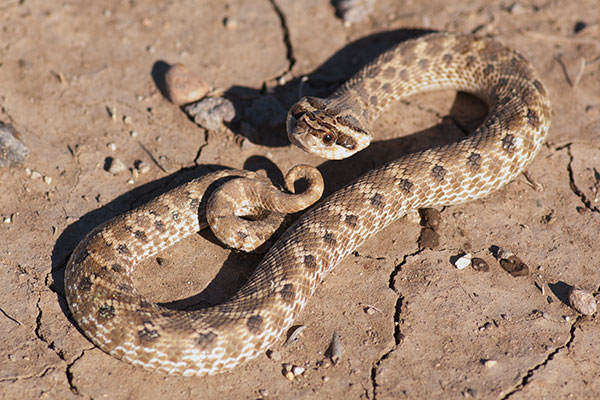
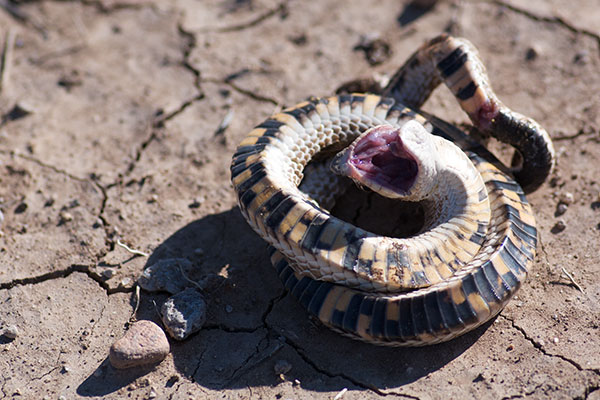
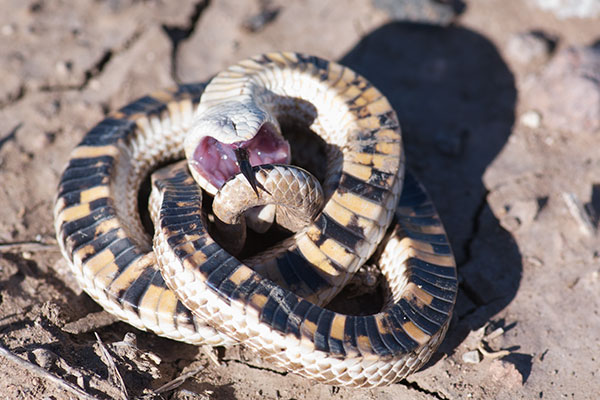
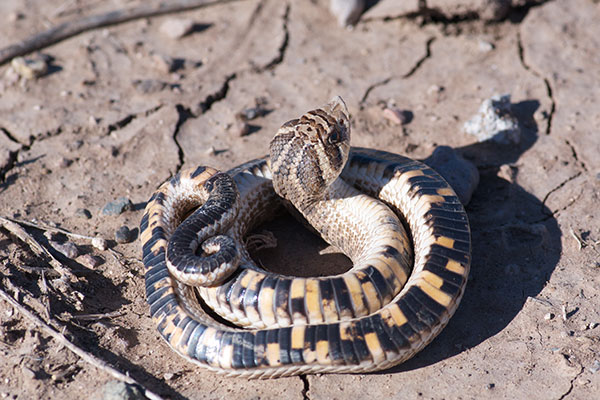
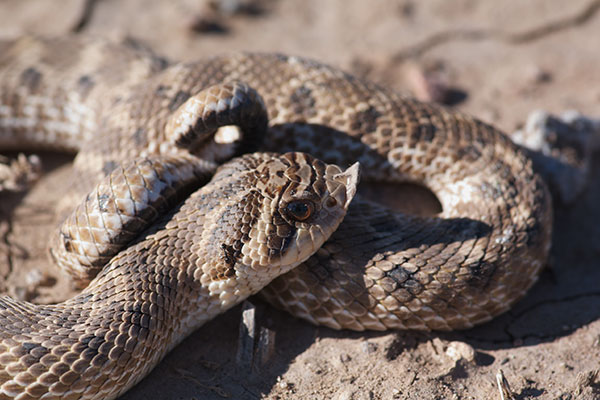
When it first became worried about my presence, it flattened its body and neck, twitched, and hissed, as if anyone would be scared of this cute little harmless snake. When it realized that it had failed to impress, it stunk up the place by excreting something foul. When even that stench wasn't enough to frighten me off, it performed a dramatic death dance, rolling over on its back, opening its mouth, and sticking out its tongue. Nobody wants to eat a dead snake, right? After holding this pose for a few minutes, it gently lifted its cute little head and looked around to see if the coast was clear. I guess it didn't notice that I was still looming nearby with my camera, because it then flipped back rightside-up and returned to its morning business.
Thanks to Matt Cage for advice on how to find this species.
- Bartlett, R. D., Tennant, A. 2000. Snakes of North America, Western Region
- Brennan, T. C. and Holycross, A. T. 2006. A Field Guide to Amphibians and Reptiles in Arizona
- Crother, B. I. (ed.) 2017. Scientific and Standard English Names of Amphibians and Reptiles of North America North of Mexico, with Comments Regarding Confidence in Our Understanding, Eighth Edition
- Ernst, C. H., Ernst, E. M. 2003. Snakes of the United States and Canada
- Stebbins, R. C. 2003. Peterson Field Guide to Western Reptiles and Amphibians, Third Edition